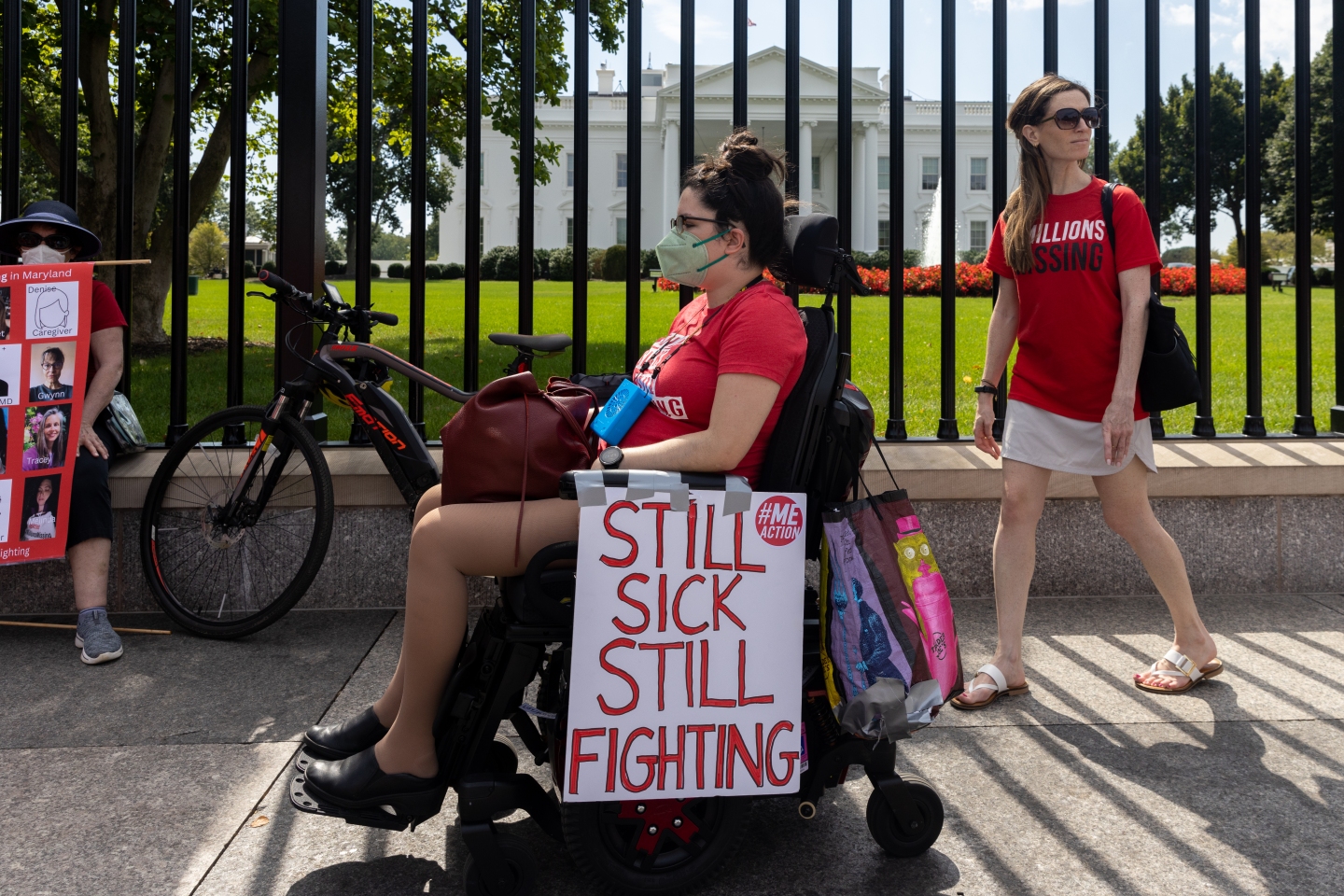
新冠肺炎的后遺癥會持續多久呢?
這是所有新冠患者都操心的問題。雖然新冠疫情已經快三年了,但是關于這個問題的答案卻是很有限的。不過生活在武漢的康復患者無疑是最清楚的,因為如果有后遺癥的話,他們肯定承受的時間最久。
今年9月15日,一篇發表在《美國醫學協會雜志》(Journal of the American Medical Association)上的研究就探討了這個問題。
中國陸軍軍醫大學和武漢火神山醫院的研究人員隨訪了近2,000名新冠肺炎康復者,他們都曾經在2020年2月至4月間在武漢的各大醫院接受治療。研究發現,新冠后遺癥的大多數長期癥狀——例如疲勞、胸悶、焦慮和肌肉疼痛等,都在出院后的第一年到第二年間得到了減輕和緩解。
但是也有例外——如果患者出現了呼吸困難,那這種癥狀就似乎無法隨著時間減輕。研究人員還發現,住過ICU的病人也更容易出現長期癥狀。
很多新冠康復者自述仍然一直有疲勞感,這一點與埃博拉和非典等病毒的康復者十分類似。非典是一種2003年爆發的冠狀病毒,其致死率要遠高于新冠病毒。研究人員寫到,非典康復者的疲勞可以持續四年之久。
研究人員表示,他們的研究對象主要是新冠病毒原始株的康復者,所以其研究結果可能適用也可能不適用于包括奧密克戎在內的其他變異毒株。
根據美國人口普查局(U.S. Census Bureau)在今年夏天收集的數據,在美國成年新冠病毒感染者中,有近20%的人自述康復后出現了“長期新冠”癥狀,也就是各種久治不愈的后遺癥。
“長期新冠”是指在感染消失后,仍然在相當長的時間內持續存在的癥狀,但是目前關于“長期新冠”尚無一個被廣泛接受的定義。
很多專家認為,“長期新冠”的最佳定義,應該是由新冠肺炎引發的一種慢性疲勞綜合征樣疾病,與其他病毒后綜合征類似。而器官損傷和其他重癥監護后綜合征則不應該被定義為“長期新冠”。
不過很多新聞從業者,以及很多向美國人口普查局以及其他機構自述有“長期新冠”癥狀的人,很可能沒有認識到這其中的區別。這意味著真正得了“長期新冠”的人數很有可能被高估了。(財富中文網)
譯者:樸成奎
新冠肺炎的后遺癥會持續多久呢?
這是所有新冠患者都操心的問題。雖然新冠疫情已經快三年了,但是關于這個問題的答案卻是很有限的。不過生活在武漢的康復患者無疑是最清楚的,因為如果有后遺癥的話,他們肯定承受的時間最久。
今年9月15日,一篇發表在《美國醫學協會雜志》(Journal of the American Medical Association)上的研究就探討了這個問題。
中國陸軍軍醫大學和武漢火神山醫院的研究人員隨訪了近2,000名新冠肺炎康復者,他們都曾經在2020年2月至4月間在武漢的各大醫院接受治療。研究發現,新冠后遺癥的大多數長期癥狀——例如疲勞、胸悶、焦慮和肌肉疼痛等,都在出院后的第一年到第二年間得到了減輕和緩解。
但是也有例外——如果患者出現了呼吸困難,那這種癥狀就似乎無法隨著時間減輕。研究人員還發現,住過ICU的病人也更容易出現長期癥狀。
很多新冠康復者自述仍然一直有疲勞感,這一點與埃博拉和非典等病毒的康復者十分類似。非典是一種2003年爆發的冠狀病毒,其致死率要遠高于新冠病毒。研究人員寫到,非典康復者的疲勞可以持續四年之久。
研究人員表示,他們的研究對象主要是新冠病毒原始株的康復者,所以其研究結果可能適用也可能不適用于包括奧密克戎在內的其他變異毒株。
根據美國人口普查局(U.S. Census Bureau)在今年夏天收集的數據,在美國成年新冠病毒感染者中,有近20%的人自述康復后出現了“長期新冠”癥狀,也就是各種久治不愈的后遺癥。
“長期新冠”是指在感染消失后,仍然在相當長的時間內持續存在的癥狀,但是目前關于“長期新冠”尚無一個被廣泛接受的定義。
很多專家認為,“長期新冠”的最佳定義,應該是由新冠肺炎引發的一種慢性疲勞綜合征樣疾病,與其他病毒后綜合征類似。而器官損傷和其他重癥監護后綜合征則不應該被定義為“長期新冠”。
不過很多新聞從業者,以及很多向美國人口普查局以及其他機構自述有“長期新冠”癥狀的人,很可能沒有認識到這其中的區別。這意味著真正得了“長期新冠”的人數很有可能被高估了。(財富中文網)
譯者:樸成奎
How long do long COVID symptoms linger?
It’s the question on the mind of millions of sufferers. Less than three years into the pandemic, answers are limited. But those in Wuhan, China—where the outbreak began in late 2019—would know best, as they’ve lived with the virus’s repercussions the longest.
A new study published on September 15 in the Journal of the American Medical Association sheds some light on the matter.
Researchers at Army Medical University in Chongqing, China, and Wuhan Huoshenshan Hospital in Wuhan, China, interviewed nearly 2,000 COVID survivors, all of whom were treated for the illness at Wuhan hospitals from February through April 2020. They found that the long-term symptoms of most—like fatigue, chest tightness, anxiety, and myalgia—lessened, then resolved between the first- and second-year anniversaries of their discharge.
The exception: patients with dyspnea (difficulty breathing), whose symptoms didn’t seem to resolve with time. Patients who had been admitted to the intensive care unit were also more likely to have persistent symptoms, researchers found.
The ongoing fatigue described by many COVID survivors is similar to that described by survivors of other diseases like Ebola and SARS, a coronavirus much more fatal than COVID-19 that caused epidemics in 2003. Fatigue in SARS survivors has been reported to last as long as four years, researchers wrote.
The study examined survivors of the initial strain of Omicron and may or may not be applicable to other strains, including Omicron, the authors emphasized.
Nearly 20% of American adults who’ve had COVID—an estimated 50 million Americans—report having long COVID symptoms after their infection resolves, according to data collected by the U.S. Census Bureau this summer.
Long COVID is roughly defined as symptoms that persist or appear long after the initial COVID infection is gone, but a consensus definition has not yet been broadly accepted.
Many experts contend that long COVID is best defined as a chronic-fatigue-syndrome-like condition that develops after COVID illness, similar to other post-viral syndromes. Other post-COVID complications, like organ damage and post-intensive-care syndrome, should not be defined as long COVID, they say.
But many of those writing reports, and self-reporting long COVID to the Census Bureau and other entities, likely aren’t making such a distinction. This means the number of those with true long COVID is likely overestimated.






